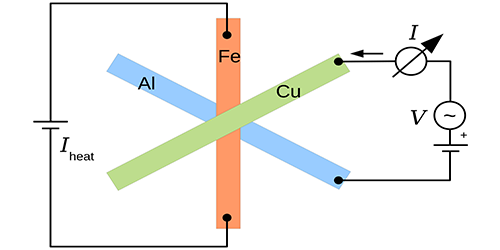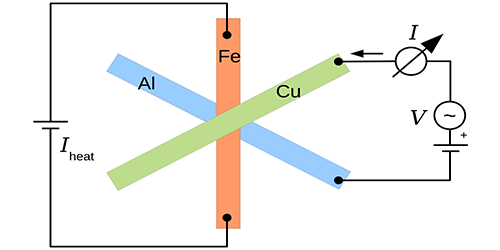With Heat Comes Current
Thermoelectric effects can convert heat into electric currents—a property that can be used for power generation and temperature sensing. Most thermoelectric devices are made of semiconductors, in which thermoelectric conversion is very efficient. Now, scientists have experimentally demonstrated that superconductors can also feature large spin-dependent thermoelectric coefficients when they are combined with ferromagnets. This finding may lead to high-precision thermometers for nanoscale and quantum thermodynamics research.
The Seebeck effect—in which a temperature difference drives a voltage—requires an asymmetry between the conductance of electrons and the conductance of holes. The effect is generally absent in superconductors, since they lack this asymmetry. But Detlef Beckmann of Karlsruhe Institute of Technology, Germany, and his team, following a 2014 theoretical proposal, showed that such asymmetry can be created by combining a superconductor with a ferromagnet. To break the symmetry of electrons and holes, the researchers applied a few-tesla magnetic field to create a spin-dependent energy shift in the charge carriers flowing through the contact between the superconductor and the ferromagnet. They observed a large transport coefficient that exceeded the values observed in most nonsuperconducting metals. The measured thermoelectric current is evidence of the coupling of spin and heat transport, suggesting that superconductors may be used in efficient cryogenic sensors and coolers.
This research is published in Physical Review Letters.
–Katherine Kornei





